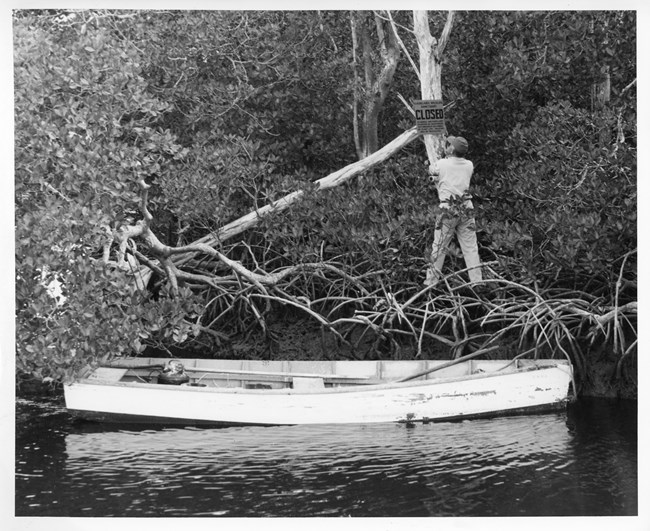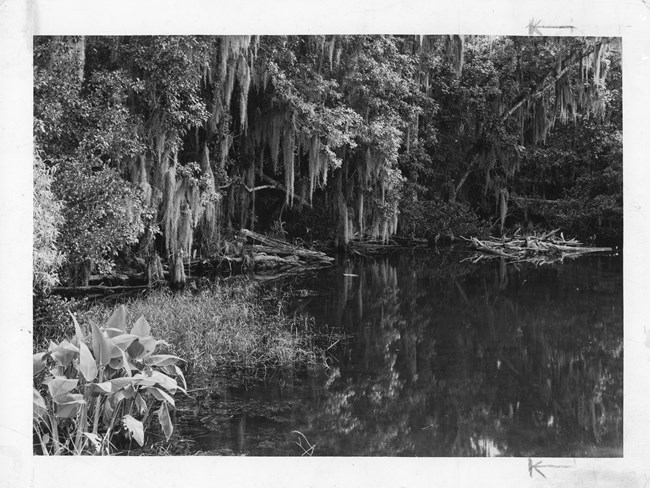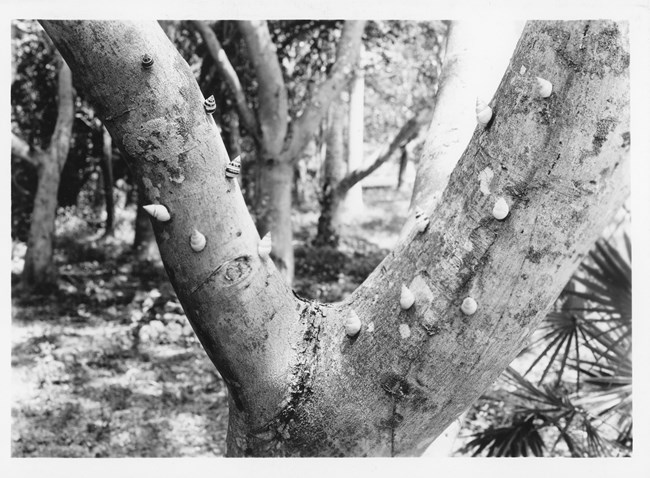George Grant was an American photographer and the first chief photographer for the National Park Service (NPS). Grant was born in Milton, Pennsylvania, and took his first photography class in 1923 while living in New York City. He was hired as a staff photographer for the NPS in 1929.
Grant was responsible for creating a photographic record of the national parks and their resources as the chief photographer for the park service. He traveled extensively throughout the United States, documenting the parks' landscapes, flora, fauna, and cultural resources. Grant's photographs were used in NPS reports, interpretive projects, and other forms of public information. Throughout his career, Grant amassed a collection of nearly 40,000 images of park service areas, including several parks in Florida. His photographs capture the beauty and majesty of the parks and the rich diversity of plant and animal life, geological formations, and cultural heritage sites within. Grant retired from the NPS in 1954 but continued to work as a photographer, specializing in aerial photography. He was also an avid conservationist and served on the board of directors for the Sierra Club. His legacy inspires and informs those who visit and work to protect America's national parks.
Grant was responsible for creating a photographic record of the national parks and their resources as the chief photographer for the park service. He traveled extensively throughout the United States, documenting the parks' landscapes, flora, fauna, and cultural resources. Grant's photographs were used in NPS reports, interpretive projects, and other forms of public information. Throughout his career, Grant amassed a collection of nearly 40,000 images of park service areas, including several parks in Florida. His photographs capture the beauty and majesty of the parks and the rich diversity of plant and animal life, geological formations, and cultural heritage sites within. Grant retired from the NPS in 1954 but continued to work as a photographer, specializing in aerial photography. He was also an avid conservationist and served on the board of directors for the Sierra Club. His legacy inspires and informs those who visit and work to protect America's national parks.

NPS photo by George Grant (EVER 17119)
Daniel B. Beard posts a sign closing the Shark River area of the Everglades Wildlife Sanctuary in 1947, prior to the dedication of the new national park. The transition from a collection of federal, state, and privately owned lands to a single park involved complex negotiations and compromises. Beard was an ecologist and conservationist who became the first superintendent of Everglades National Park and played a key role in this transition.

NPS photo by George Grant (EVER 17213)
The Everglades is a vast, marshy wetland characterized by cypress trees, sawgrass, mangroves, and Spanish moss. It is home to many native species, including the Florida panther, wading birds, and small mammals. Vast regions of Everglades National Park are similar to what is visible in this photo from April 4, 1937.

NPS photo by George Grant (EVER 17211)
Florida tree snails are unique and beautiful. They feature brilliant, banded whorls and a sleek, polished finish. The lichen they consume contributes to their distinctive patterns and colors. This photo shows several Florida tree snails attached to a gumbo limbo tree in Royal Palm State Park. Those state park lands were donated to become part of Everglades National Park.
Click the links to learn more about Royal Palm State Park and the Florida tree snail
Last updated: February 20, 2025
